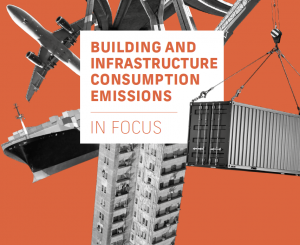To achieve a more climate-friendly future practical steps need to be taken in the development and construction of cities. C40 Cities partnered with Arup and the University of Leeds to publish Building and Infrastructure Consumption Emissions, a report highlighting key opportunities to reduce construction emissions.
1. Implement efficiency in material design
The report highlighted material efficiency as “one of the most effective means to reduce emissions,” noting that eliminating material waste at the design stage could lead to an 18% reduction of greenhouse gas (GHG) emissions between 2017 and 2050. The report particularly highlights the targets of reducing steel and cement use in construction, noting that the minerals in cement account for 32% of all emissions from material consumption, while steel accounts for 15%.
2. Reuse building materials and components
In keeping with the suggestion to implement efficiency in material design, the report also highlighted the long-term climate benefits of recycling and reducing building components, which could lead to a 3% reduction of GHG emissions between 2017 and 2050.
3. Enhance existing building utilization
Buildings are underutilized and often discarded before they have reached the end of their useful life, which can result in an avoidable level of GHG emissions. Implementing strategic use of existing space and infrastructure can lead to an 11% GHG emission reduction by 2050, and a 10%-20% reduction in demand for new buildings. As concepts like brick-and-mortar retail face a demise and building vacancies rise, some cities are becoming more aware of how to reuse those buildings for second-life purposes. The benefits of utilizing existing infrastructure can be mirrored in the use of vacant lots for development and construction, as opposed to tearing down forestry or existing buildings for such development.
4. Switch high-emission materials to sustainable timber
Timber construction has been gaining popularity as a way to reduce materials emissions and utilize local and sustainably managed forests. Report authors suggest that switching to timber use in construction could cut GHG emissions by 6% between 2017 and 2050, urging a progressive target of 75% residential and 50% commercial buildings being constructed with sustainable timber.
5. Use low-carbon cement
Concrete is one of the most carbon-intensive construction materials as the production of its cement component requires extreme heat and releases a great deal of CO2, the report reads. It notes that using low-carbon alternatives to traditional cement could cut GHG emissions by 6% between 2017 and 2050.
Zero-emission construction logistics
A significant contribution (16%) to buildings and infrastructure emissions comes from the energy used throughout the supply chain, including electricity generation and fossil fuel extraction. The research identified that a switch to low-emission or electric construction vehicles is a necessary action to meet the net-zero emissions targets. However, as materials are the main source of emissions these must be tackled as a priority.
The use of low- and zero-emission construction machinery is not included in the research as an intervention in this model, due to the data gap that meant researchers could not quantify its benefits.
Source: C40 Cities partnered with Arup and the University of Leeds to publish Building and Infrastructure Consumption Emissions, a report highlighting key ways to reduce construction emissions. Switching to zero-emission construction vehicles is seen as an option for reducing dangerous local emissions and noise, and improving air quality and noise pollution from the site itself

